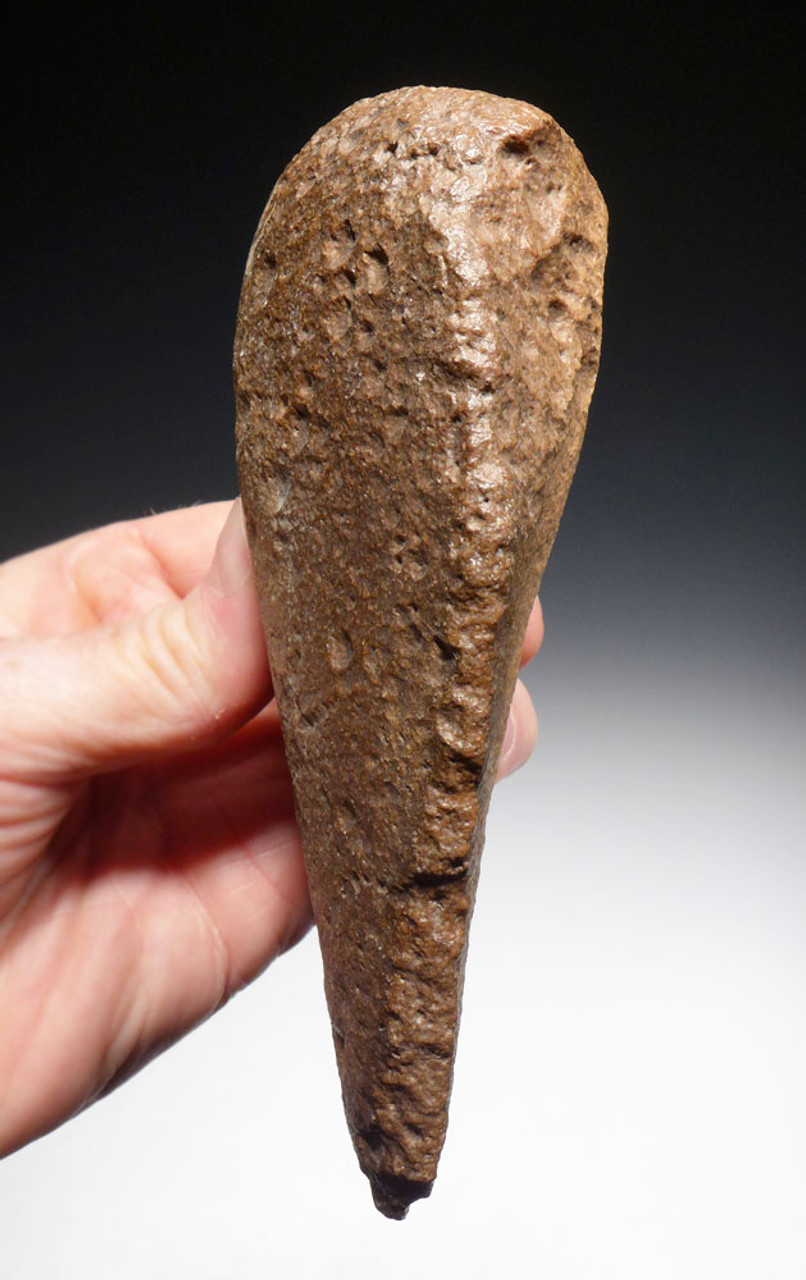Product Description
SEE MORE ACHEULEAN STONE AGE TOOLS
This GENUINE Acheulean hand axe was made and used by early humans of the primitive species Homo erectus (ergaster). It was surface-collected from an exposed Lower Paleolithic Acheulian site in the Sahara Desert of Northwest Africa. Acheulean Lower Paleolithic hand axes from Africa represent the first scientifically documented intelligent design made by primitive humans. Prior to these Saharan Acheulean handaxes, only crude pebble and flake tools existed in the human fossil record.
With the vast majority of African hand axes being made of quartzite, this specimen is a rare treat, indeed! It was fashioned out of vesicular basalt, a form of volcanic stone that is filled with small holes. It appears to have been struck from a larger basalt nodule and then worked into an almond-shaped form. The original outer cortex of the larger basalt boulder it was flaked from, was retained on one side. The rounded portion was ingeniously utilized as the grip. This demonstrates advanced intelligence in design concept and execution of the creation of a prehistoric tool! To date, this is one of only 3 vesicular basalt African Acheulean hand axes we have ever had the pleasure of offering in the last 22 years!
When originally made, the edges of the basalt would have been extremely sharp. The pocked surface would have been a perfect surface to best grip the stone when covered in fat and blood during butchering use after a hunt! The form displays highly skilled flaking and workmanship that yielded an extremely functional and ergonomic hand axe with a tapered tip for puncturing bones of large hunted game animals to get to the prized marrow inside. At this period in prehistory, large animals such as prehistoric giraffe, bison and elephant would have existed in numbers in what is now, inhospitable desert. Butchering animals such as this would require specialized tools such as this rare example.
The hand axe is in original, as made condition as well as being complete. The surface shows a "desert varnish", a natural glossy surface caused by the exposure of the stone to the blowing sands over hundreds of thousands of years. Original sediment and mineral encrustations are still present in microscopic crevices and cracks - a trait ONLY found in authentic Paleolithic artifacts like these. Tip and edges are intact with remarkable detail in the flaking on the edges.
HISTORY
During this time in prehistory when this Lower Paleolithic tool was made, the Sahara Desert (where this stone tool was found) was a savanna rich in wildlife. Prior to the prehistoric global warming that turned the vast region to desert, early humans lived alongside prehistoric giraffe, bison and elephant, which were vital to their survival. Hunting and butchering these animals would have required specialized tools such as those found in the Acheulean Period.
 US DOLLAR
US DOLLAR
 EURO
EURO
 AUSTRALIAN DOLLAR
AUSTRALIAN DOLLAR
 CANADIAN DOLLAR
CANADIAN DOLLAR
 POUND STERLING
POUND STERLING
























